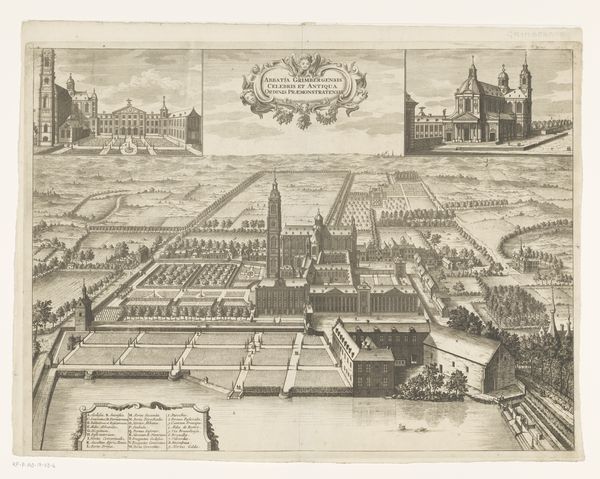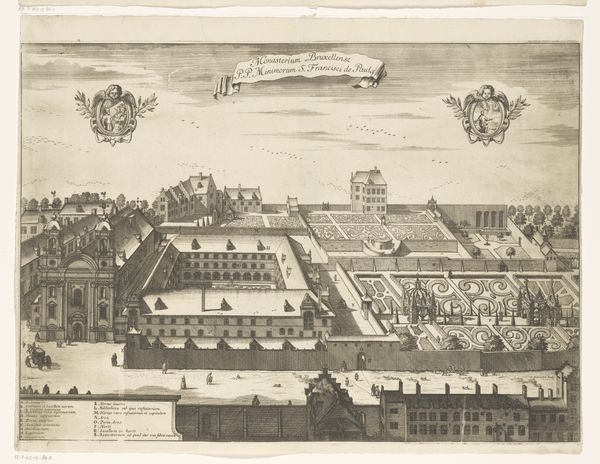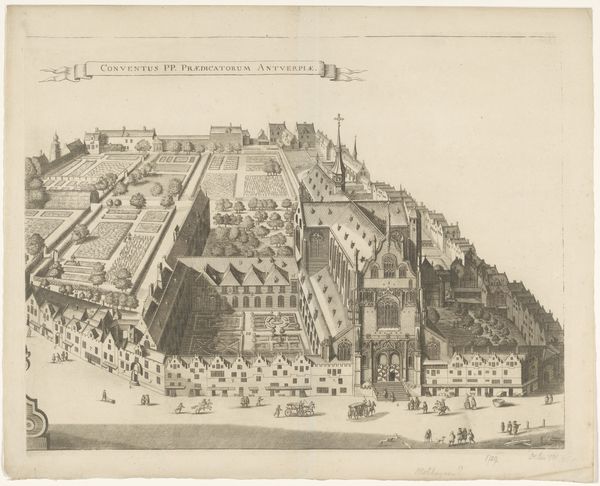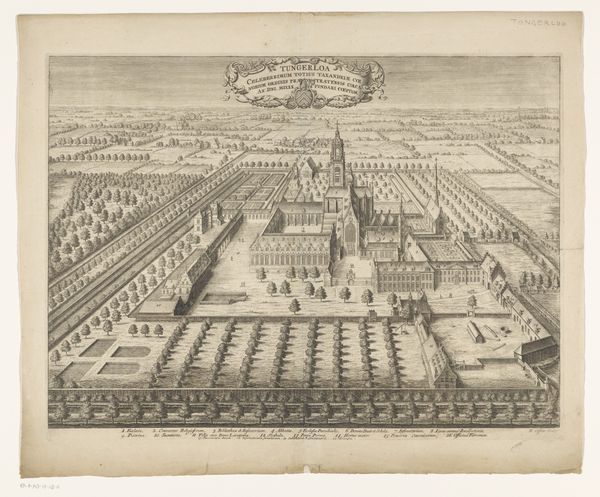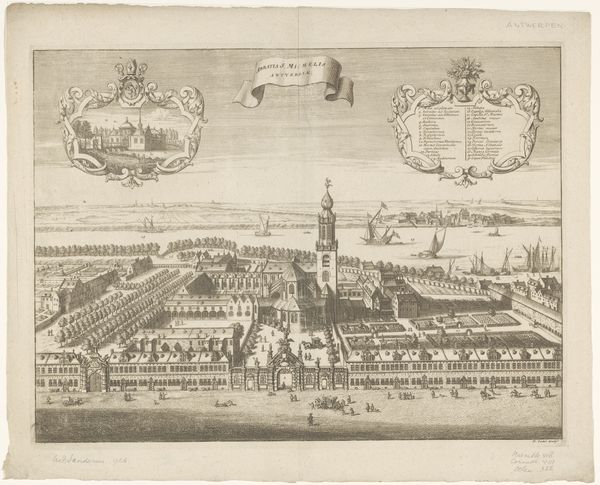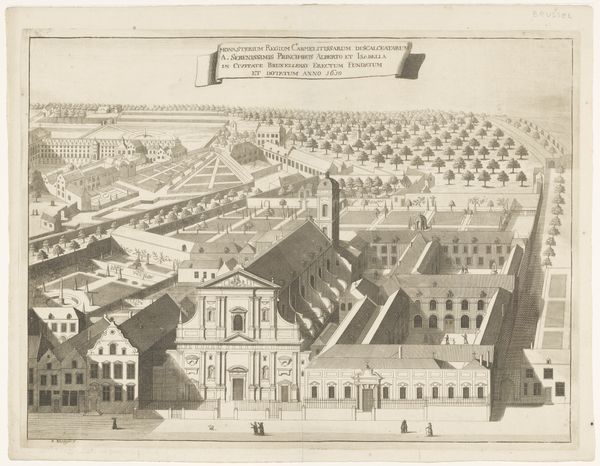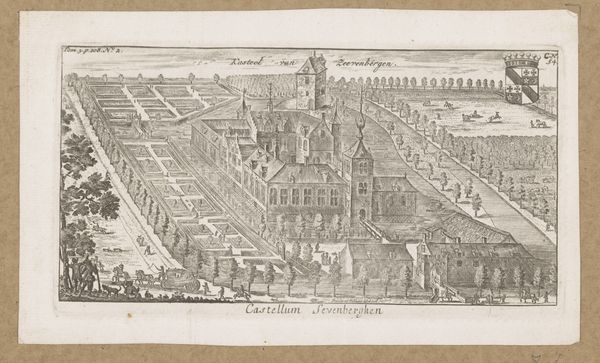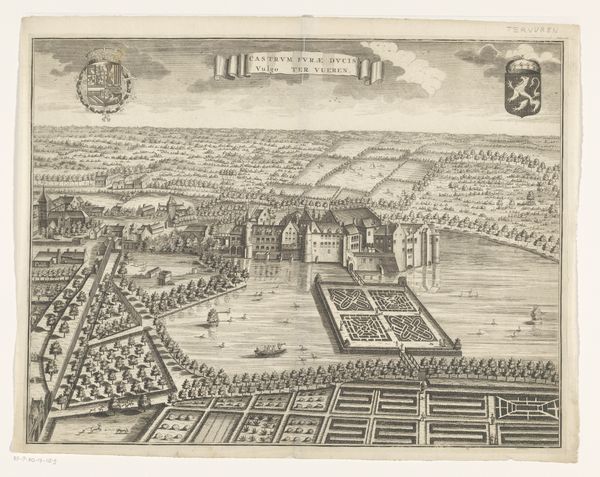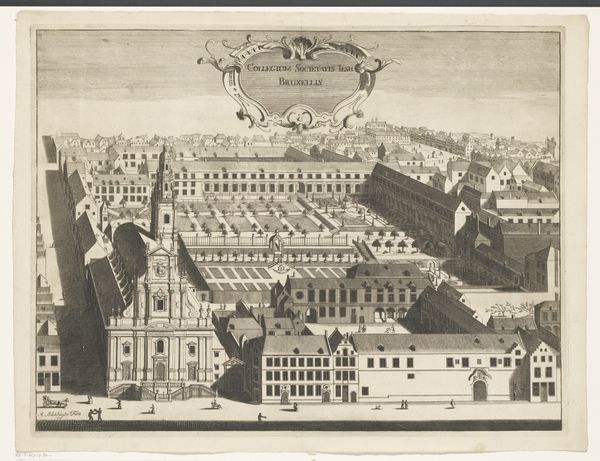
print, etching, engraving, architecture
#
architectural sketch
#
aged paper
#
mechanical pen drawing
# print
#
etching
#
old engraving style
#
sketch book
#
landscape
#
linework heavy
#
geometric
#
pen-ink sketch
#
pen work
#
architecture drawing
#
cityscape
#
history-painting
#
engraving
#
architecture
#
intricate and detailed
Dimensions: height 367 mm, width 471 mm
Copyright: Rijks Museum: Open Domain
Curator: Look at this remarkable print titled "Gezicht op het Escorial in vogelvluchtperspectief" dating from between 1545 and 1624, attributed to Joannes van Dale. It is a wonderfully intricate depiction of the Escorial palace in Spain. Editor: My first impression is how imposing the structure is, even in two dimensions. The strict geometry almost overwhelms the surrounding landscape. The sheer labor that this kind of complex design and print demanded is also obvious. Curator: Indeed, the meticulous details invite closer examination. The Escorial's construction was deeply intertwined with the sociopolitical context of the time. Philip II commissioned it not only as a royal residence but also as a testament to his power and piety amidst religious conflicts. We see here a built manifestation of the Counter-Reformation’s ideologies. Editor: Absolutely, the means of production are significant. Look at the consistent lines achieved through the etching and engraving processes, each requiring specialized skills and a degree of standardization. It underscores the value placed on technical precision, especially when capturing such architectural feats for wider distribution. The consumption of such images reinforces specific social and power dynamics, circulating an idea of centralized authority. Curator: Consider how the landscape is subordinate to the architecture, emphasizing the idea of human control and mastery over nature. We must consider how this kind of representation enforces the patriarchal ideals of power by dominating natural and communal resources. How might the artist's hand have shaped the narrative and reinforced social biases of the period? Editor: Exactly. And this view—almost like a map—would have influenced how viewers perceived and consumed not just the building but the power it represented. Think about how many prints would have needed to have been made, for example, and distributed to demonstrate the reach of power and materials to produce this vision. It brings into sharp focus the interconnected nature of labor, material, and societal values inherent to this kind of architectural engraving. Curator: Engaging with this print invites us to question how such displays of grandeur function within broader cultural narratives. The emphasis here on control raises crucial discussions around historical and contemporary power structures, specifically concerning the impacts of colonialism. Editor: It becomes very clear that while a landscape can represent a place, it also captures and carries a time, effort, and value that shapes our own understanding of materials. Thank you, this work’s artistry truly lies in the means and methods by which it presents a singular monument for posterity.
Comments
No comments
Be the first to comment and join the conversation on the ultimate creative platform.
